As Los Angeles is the country’s leading hub for movie and television production, the city’s many neighborhoods and attractions have appeared in countless films and shows. It’s hardly an understatement that for many first-time visitors, exploring Los Angeles can feel very much like traveling through a real-life movie. With so many unique areas to film, we’ve put together a list highlighting some of LA’s more notable film locations. Before you get started on your next filmmaking project in the city, be sure to check out Los Angeles County’s policy regarding film permits to ensure your production goes off without a hitch.
Chinatown
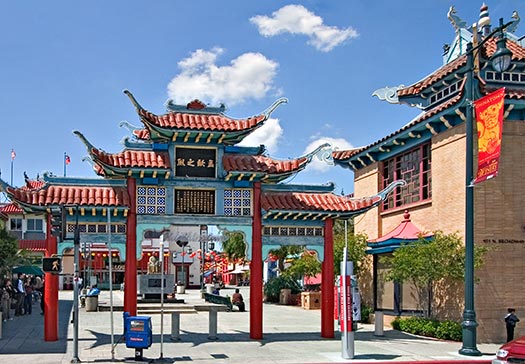
The first modern American Chinatown, Los Angeles’ Chinatown Central Plaza was opened on June 25, 1938, becoming one of the country’s original open malls, with the iconic East Gate being completed in 1939. The area is composed of buildings that combine American and Chinese styles to create a unique location that has served as the backdrop for such films as Chinatown, Rush Hour, and Lethal Weapon 4. While many of the area’s Chinese population has relocated to other areas of Los Angeles, this one-of-a-kind commercial center is still a leading bastion for Chinese culture, food, and music.
Santa Monica Pier
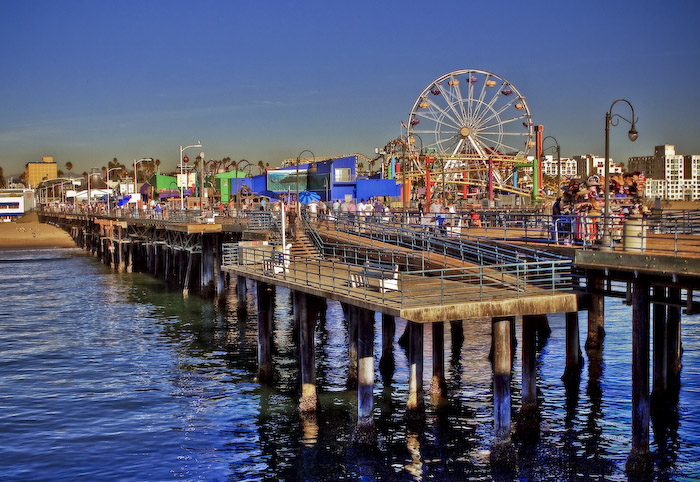
Originally opened in 1909 following a year of construction, the Santa Monica Pier has been attracting locals and tourists alike for over a century. Boasting Pacific Park, which is a family amusement park and has a sizable Ferris Wheel, a carousel from the 1920s, the Santa Monica Pier Aquariums, stores, street entertainers, restaurants, and a number of other popular local businesses, the pier offers countless scenic locales that have appeared in such notable movies as The Sting, Beverly Hills Cop III, Funny Girl, Forrest Gump, and They Shoot Horses, Don’t They? Also, if you’re looking to get some fishing done in between takes, the end of the pier is a popular spot for fishers. With an annual visitor rate of over four million people visiting the pier every year, there is countless opportunities for filmmakers to find extras and interesting characters for their projects.
Beverly Hills Hotel
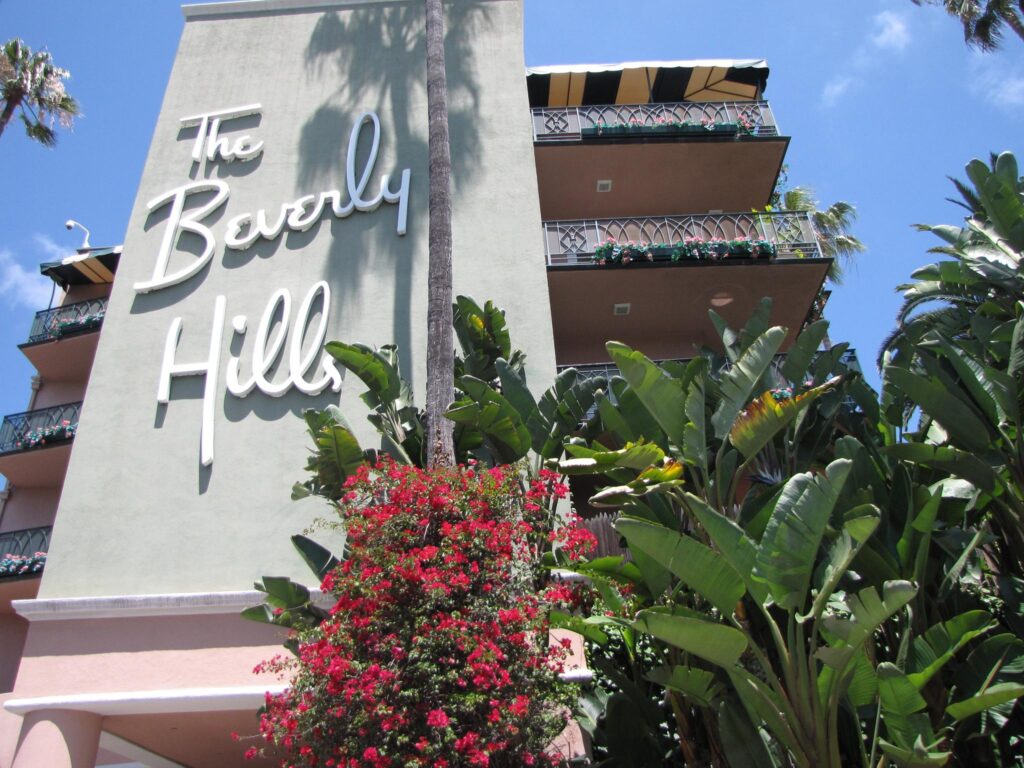
On May 12, 1912, Margaret J. Anderson and her son, Stanley S. Anderson, opened The Beverly Hills Hotel. After unsuccessful attempts had been made to drill for oil, water was found. With that discovery, Burton Green formed the Rodeo Land and Water Company. He announced plans to build a city with large lots of curved, tree-lined streets. But Green needed a special attraction to set his city above all the other housing developments sprouting up around Southern California at the turn of the century.
A grand hotel was envisioned, and Green persuaded the Andersons of Hollywood Hotel fame to come and build their dream. Against all advice, they left their secure surroundings in Hollywood and came to the undeveloped area that was later to become the city of Beverly Hills, literally built around the new hotel. Over the course of the century, the hotel became a popular destination for celebrities and royalty, with such famous guests including the Duke and Duchess of Windsor, Howard Hughes, John Wayne, and many others. It was also featured on the cover of the Eagles’ famous Hotel CaliforniaLP and in such movies as The Way We Were, Shampoo, California Suite, and American Gigolo.
City Hall
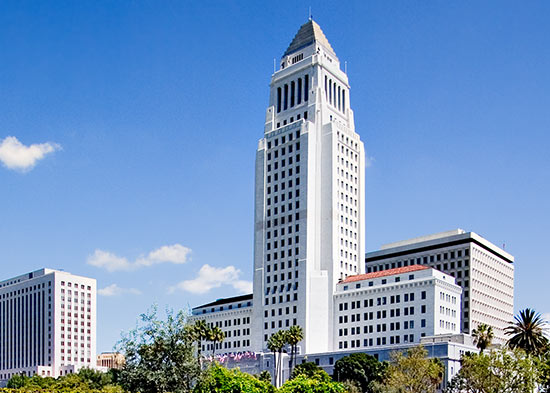
The tallest base isolated structure in the world, Los Angeles City Hall serves as the center of government for Los Angeles and is where the mayor’s office is located alongside the meeting chamber for the Los Angeles City Council. Designed by John Parkinson, John C. Austin, and Albert C. Martin, Sr. and completed in 1928, the building’s singular art deco-inspired style would help to inspire the design of other notable buildings in downtown Los Angeles, such as the Los Angeles Public Library.
The building’s iconic status as both an architectural and cultural landmark has only grown over time as it has served as the backdrop for countless classic movies and TV series, appearing as the Daily Planet building in the Adventures of Superman, Dragnet, Adam-12, the 1953 version of War of the Worlds, Perry Mason, and countless other productions. If you’re looking to give your production a classic LA feel, the City Hall is a perfect location for filming.
Griffith Observatory
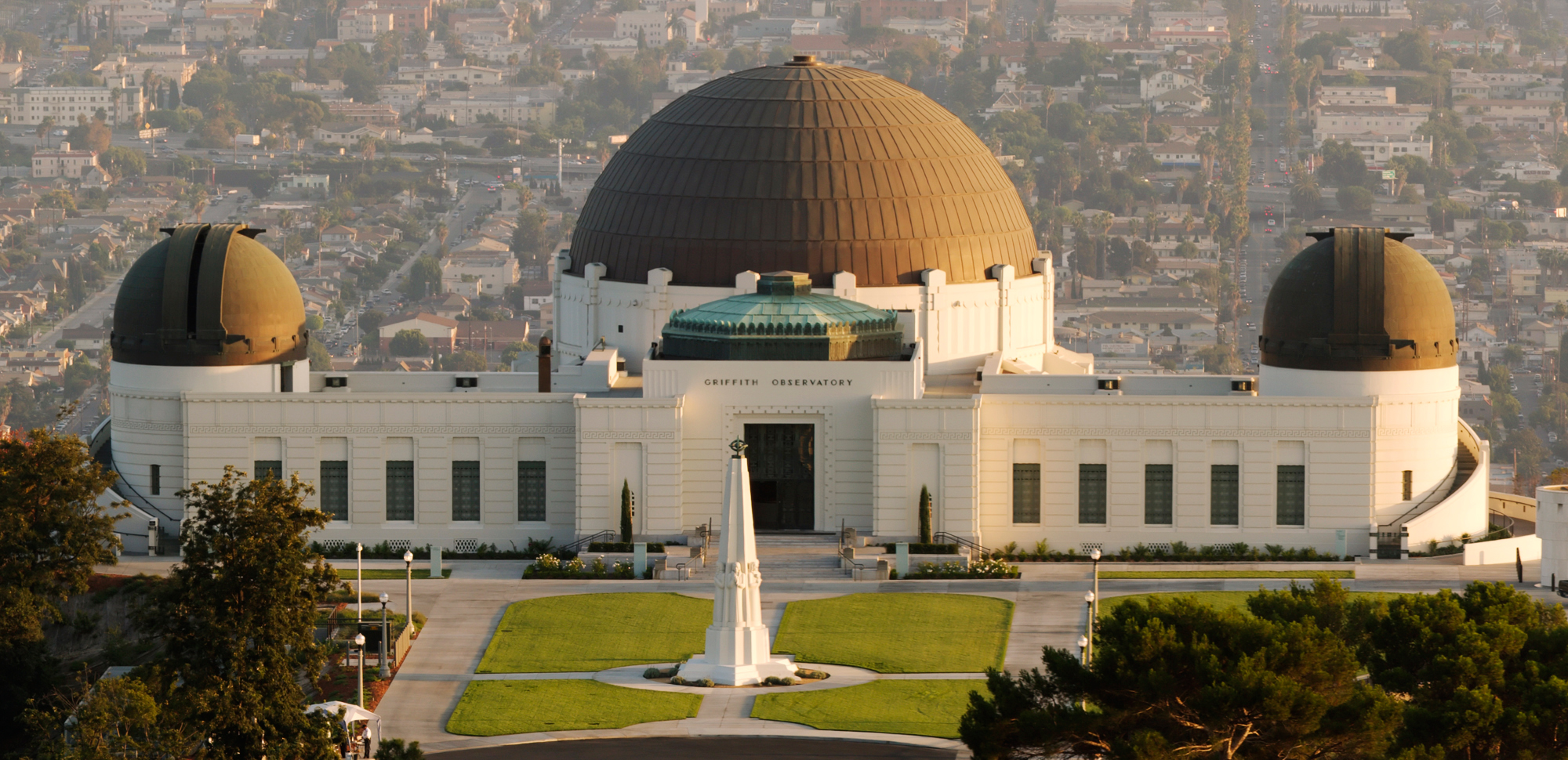
Made famous to cinephiles the world over due to its appearance in the classic James Dean film Rebel Without a Cause, the Griffith Observatory opened in 1935 after Colonel Griffith J. Griffith gifted the city with the 3,015 acres upon which the observatory would be built. The observatory was unique from its inception as Griffith had made it a stated goal of making observatories open to the public at a time when they were primarily used solely by scientists. As such, the observatory remains free to the general public.
Located on Mount Hollywood, the facility and its surrounding park offer visitors and filmmakers an extraordinary view of the Los Angeles Basin, which includes downtown, Hollywood, and the Pacific Ocean. Some of the famous films that have used the location include Flash Gordon, The Terminator, The Rocketeer, The People vs. Larry Flynt, Yes Man, and Terminator Salvation.
Millenium Biltmore Hotel

The Millennium Biltmore in Los Angeles, California opened in 1923 and at the time was the largest hotel west of Chicago and designed by architects Schultze & Weaver. Originally named the Los Angeles Biltmore Hotel, it was made a Historic-Cultural Monument in 1969. Its interior is extremely ornate with frescos and murals, marble fountains and columns, and bronze stairwells and doorways.
The hotel’s lobby was featured in the movie Ghostbusters, as the fictional Sedgewick Hotel. It also served as an early location for the Academy Award Ceremony when the Academy of Motion Pictures Arts and Sciences was founded at a luncheon banquet at the hotel’s famous Crystal Ballroom in May 1927. It was the nerve center of the 1960 Democratic National Convention; headquarters of the Democratic National Committee and housed TV networks and candidates including John F. Kennedy, Lyndon B. Johnson, and Adlai E. Stevenson. Movies that have been shot at the hotel include Vertigo, Chinatown, and Beverly Hills Cop.
San Fernando Mission
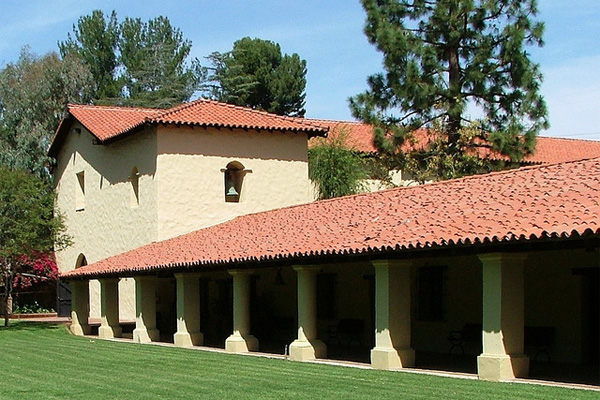
Based in the Mission Hills district of Los Angeles, the Mission San Fernando Rey de España was established by Father Fermín Lasuén on September 8, 1797. The fourth such mission he had built in as many months, Lasuén had chosen the location due to its accessibility and the mission served to both spread the Christian message and establish a Spanish colony in the United States.
Over the course of the next two centuries, the San Fernando Mission became a fixture of the Los Angeles landscape, being sold and re-sold multiple times and operating as a train station, a warehouse, and even a hog farm at one point. In 1971, the San Fernando earthquake caused enough damage to the mission that the city had to re-build it completely.
With the birth of the film and television industries, the San Fernando mission appeared increasingly on movie and TV screens in such productions as Dragnet, Knight Rider, Pee-Wee’s Big Adventure, and Incredible Hulk, making it a perfect location to capture a slice of historic Los Angeles.
Queen Mary
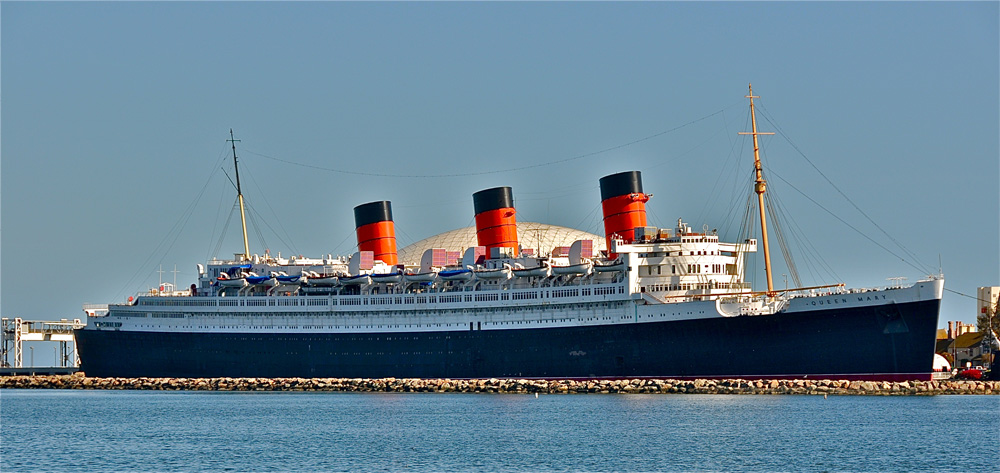
Originally constructed as an ocean liner that traversed the North Atlantic Ocean from 1936 to 1967 by the Scottish business John Brown & Company, the Queen Mary was designed to compete with the superliners that were being built by German and French companies is the 1920s and 30s. During World War II, the Queen Mary was transformed into a troopship that carried Allied soldiers before returning to commercial service following the war.
By 1967, although the Queen Mary was one of the most popular ocean liners, as it was losing money it was ultimately retired that year, where it was sailed to the port at Long Beach, California and has remained since then. Over the past four decades, the ship has become a nexus of commercial activity as restaurants, a museum, and a hotel, which helped to earn the ship its place on the National Register of Historic Places. Since its retirement, it has served as a location in such films as The Poseidon Adventure, Death Cruise, Chaplin, and Pearl Harbor.
Greystone Mansion
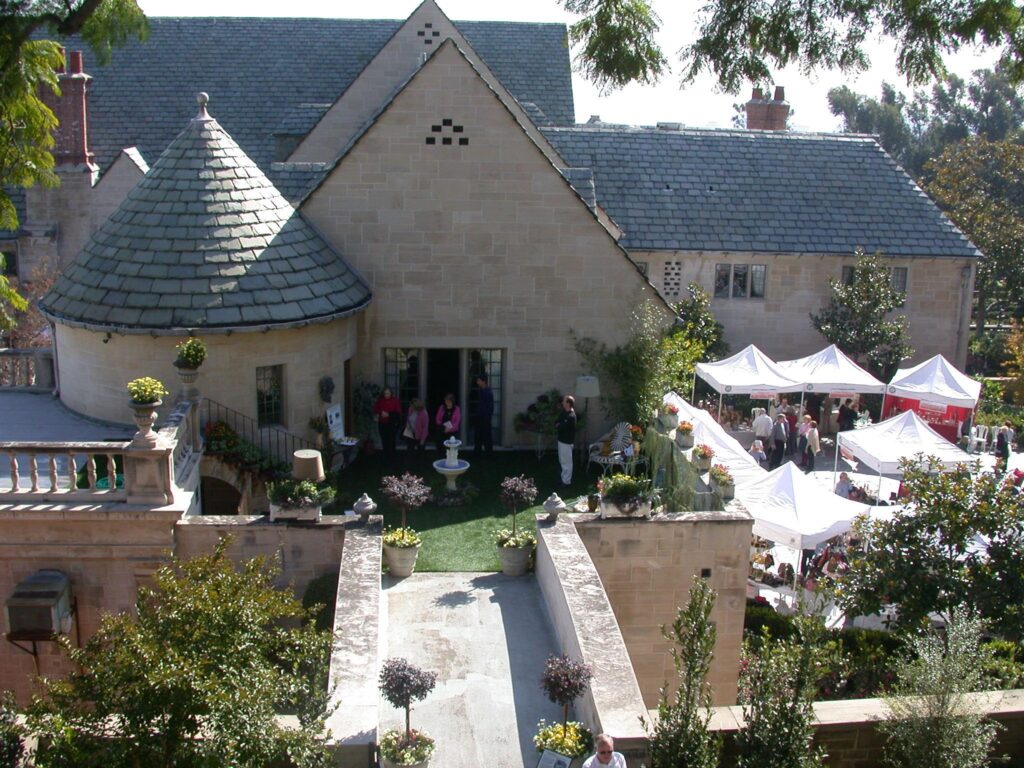
The largest home ever built in Beverly Hills, Greystone mansion was built by famed oil-tycoon Edward Doheny in 1928, as a gift to his son Ned. With over 46,000 square feet of living space, it cost more than $4 million to build in 1928. Many people hail this massive home as one of the grandest mansions on the West coast.
Shortly after the house was built, there occurred a legendary controversy wherein Ned and his secretary died of a murder-suicide. Ned’s family remained in the house until 1955 and its new owner nearly demolished the home until the neighborhood of Beverly Hills stepped in and purchased the mansion, leasing it to the American Film Institute from 1965 to 1982, wherein countless films and television shows were and continue to be shot. Now a public park, every summer Catskills West holds a play in the pool area entitled The Manor. Some of the many films and shows to be shot in and around the mansion include The Big Lebowski, The Bodyguard, Alias, The Muppets, Spider-Man, and There Will Be Blood.
Union Station
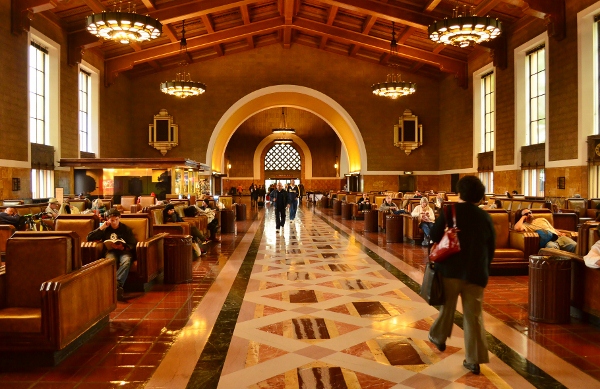
Built and opened in 1939, Union Station is known by many as the “Last of the Great Railway Stations” to be constructed in the US, serving trains from the Union Pacific, Southern Pacific, and Santa Fe Railways. Partially designed by John and Donald B. Parkinson—the father and son duo who were also responsible for Los Angeles City Hall—the station itself was an amalgamation of different styles that included Dutch Colonial Revival and Mission Revival. As such, it has served as an iconic film location for movies that include Catch Me If You Can, Blade Runner, Speed, and Star Trek: First Contact.
